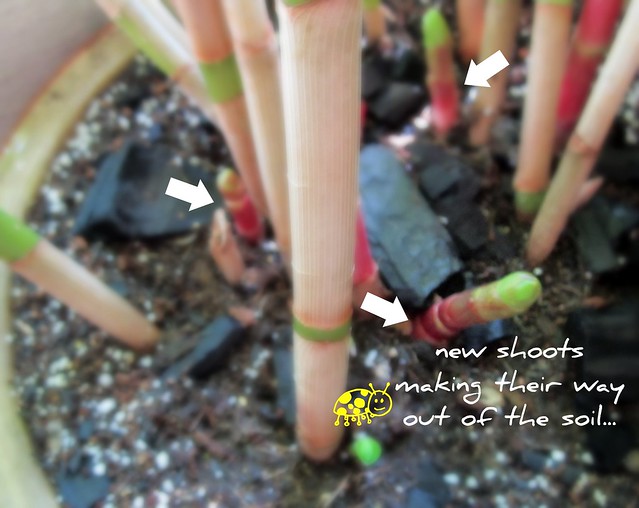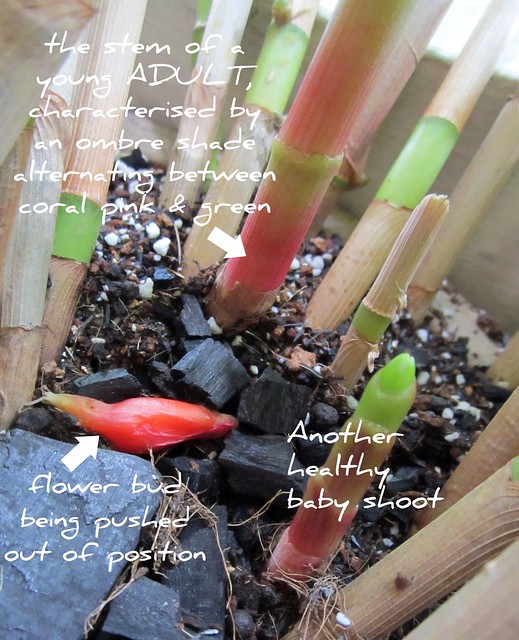I had been trying to google up its scientific name from search engines but seems like I've lost it as I don't seemed to be able to locate it although there were plenty of photographs of it on the internet.
Based on my experience as an owner of such plants, they were descent of the Ginger family. And their roots were bulb like, characterised by a need to "drink" alot of water. Since their threshold for water is high and a flowery plant, they would require fluids & a good amount of sunlight to thrive well.
Following the advice of the nursery very closely, I would water the plants at the roots (where the stems sprouts out from the soil) every morning. The amount of water to use would be based on my discretion.
If I noticed that the top soil is dry, I would water these potted plants until I see the excess water trickling out from the bottom of the pot. This would mean that the plants have already drunk a sufficient amount of water.
However, if there was a heavy downpour the day before or over the night and the soil is say, wet, I would water sparingly.
As typical of the characteristics of the GINGER family, new shoots would either grow from the existing bulb-like roots which were buried in the soil, or sprout from any section of the stem.
Based on my experience as an owner of such plants, they were descent of the Ginger family. And their roots were bulb like, characterised by a need to "drink" alot of water. Since their threshold for water is high and a flowery plant, they would require fluids & a good amount of sunlight to thrive well.
Following the advice of the nursery very closely, I would water the plants at the roots (where the stems sprouts out from the soil) every morning. The amount of water to use would be based on my discretion.
If I noticed that the top soil is dry, I would water these potted plants until I see the excess water trickling out from the bottom of the pot. This would mean that the plants have already drunk a sufficient amount of water.
However, if there was a heavy downpour the day before or over the night and the soil is say, wet, I would water sparingly.
As typical of the characteristics of the GINGER family, new shoots would either grow from the existing bulb-like roots which were buried in the soil, or sprout from any section of the stem.
While most of the baby shoots making its way up from the soil are healthy with a fat, stout-looking "physique", I had my fair share of "babies" with stunted growth as shown the photograph below:
A close-up shot of the puny-looking "baby":
The interesting thing is that most of these reed-thin "babies" would still survive but they grow up simply to add on to the numbers of "sisters" in the same pot of plant. They can hardly flower even if they grew up to have a tiny "red corn" characterised by this breed of Ginger plant.
(I've decided to assign them a female gender since they are flowering plants, and hence, the term "sisters" )This photograph shows a stunted adult which had been surviving in a new potted plant for the past 6 months. A sturdy "sister" whose only slightly more than 1 month old & still in the adolescent stage stood strong & tall beside this weak, thin adult.
In some cases whereby there is almost a lack of sunlight, these stunted versions would gradually die off on their own even with water & fertiliser.
A photograph of the flower bud being pushed out of the "scales" of the "red corn", and having a free fall onto the top soil; we do not remove such buds but left them on the soil as fertiliser.
When my hubby spotted the bud on the soil the very first time, he actually wondered what is a dead molly fish doing there...






No comments:
Post a Comment